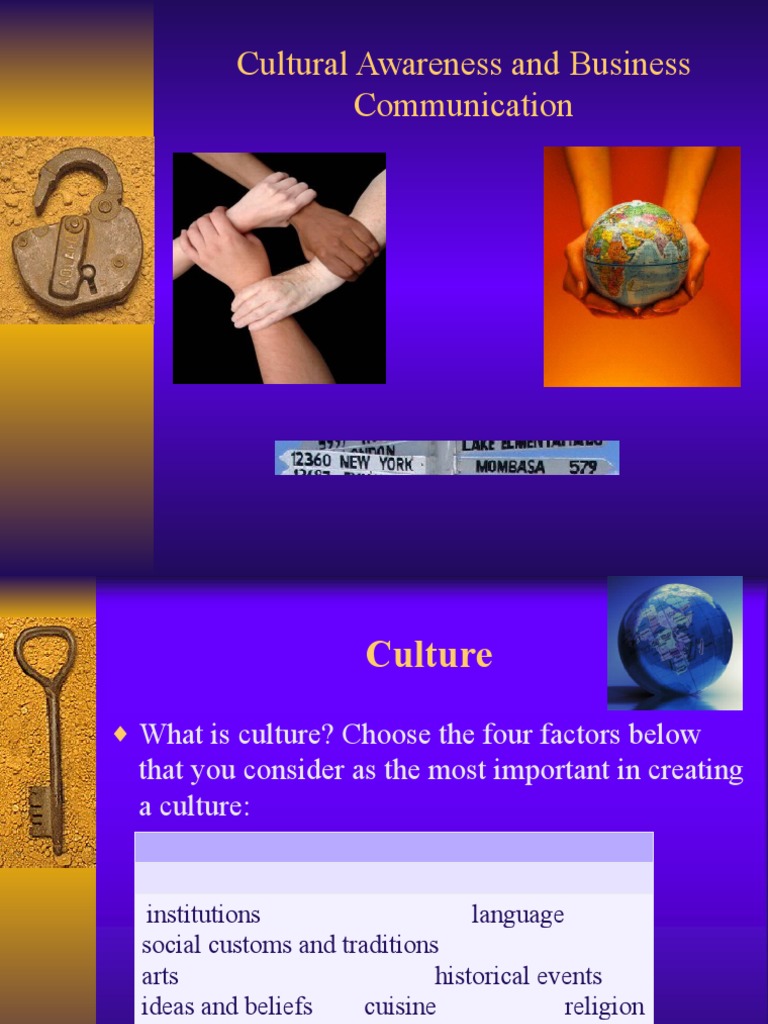In a globalized economy, the importance of cultural awareness and sensitivity in business communication has escalated dramatically. With businesses expanding their footprints across borders, understanding cultural nuances is no longer just an added advantage; it has become a fundamental prerequisite for effective communication. But, can your business thrive in a multicultural landscape without a robust framework for cultural sensitivity? As we explore this pressing question, we will delve into the concept of cultural awareness, its implications for business operations, and the challenges that accompany it.
Cultural awareness refers to the recognition and appreciation of the differences and similarities between various cultures. This element is critical in a world where companies are merging diverse perspectives and ideologies. At its core, cultural sensitivity involves understanding how cultural differences can impact interpersonal communication styles, decision-making processes, and bargaining techniques. This involves recognizing how varying cultural contexts influence behaviors, attitudes, and values. For example, a straightforward, direct communication style might be appreciated in some cultures while considered rude in others. This juxtaposition can lead to misunderstandings and, ultimately, business failures if not managed adeptly.
One of the primary challenges many organizations face is the potential for cultural blind spots. When a business operates predominantly within a single culture, there can be an inherent tendency to project that culture’s values and practices onto others. This propensity can create friction in multicultural environments, thereby undermining collaborative efforts. But how do businesses overcome this challenge? An answer lies in fostering a culture of continuous learning and openness. Encouraging employees to engage with diverse cultures, whether through training programs, workshops, or experiential learning opportunities, can significantly enhance their cultural fluency and, consequently, the organization’s effectiveness in global markets.
Moreover, it’s imperative to understand that language is not merely a tool for communication; it is a repository of culture. Verbal communication varies dramatically across cultures, encompassing nuances that might elude non-native speakers. Cultivating linguistic proficiency, therefore, extends beyond mastering vocabulary or grammar; it demands an understanding of idiomatic expressions, humor, and even gestures. For instance, certain hand signs that are benign in one culture might be offensive in another. This complexity necessitates a multifaceted approach to business communication, where language learners should not only focus on the words but also the underlying cultural context to ensure effective exchange of ideas.
Another critical facet of cultural awareness in business communication is non-verbal cues, which can often speak louder than words. These cues may include body language, eye contact, or even the physical distance maintained during conversations. For example, in some cultures, maintaining direct eye contact signifies confidence and honesty, while in others, it may be perceived as aggressive or inappropriate. Recognizing these subtleties can greatly enhance interpersonal interactions and reinforce trust among colleagues and clients alike.
This leads to an important question: how can organizations effectively build a culturally diverse team that embodies sensitivity and awareness? Diversity in the workplace can be a double-edged sword; while it brings innovation and varied perspectives, it might also lead to conflicts if not handled with care. To mitigate potential discord, it is essential to establish clear communication protocols and cultural norms that foster inclusivity. Creating a safe space for employees to express their cultural identities and experiences can encourage mutual respect and understanding. Moreover, businesses should pursue proactive policies to address prejudices and bias, creating a harmonious workplace where every voice is valued.
Nonetheless, navigating cultural diversity is fraught with challenges. Miscommunication can lead to lost contracts, tarnished reputations, and ultimately, diminished profitability. For instance, consider a scenario where an executive misinterprets a negotiation tactic rooted in cultural differences. Such situations can not only stall progress but might also jeopardize long-term relationships. As such, developing a comprehensive strategy for managing intercultural communication is crucial. This might include employing cultural mediators or consultants who specialize in cross-cultural interaction, thereby bridging gaps that exist due to cultural differences.
Furthermore, organizations should harness technology to augment their cultural communication competencies. The advent of various online platforms and communication tools can facilitate smoother exchanges among multicultural teams. Virtual conferencing, collaborative apps, and translation software can diminish barriers, allowing employees to focus on their shared objectives rather than their differences. However, technology should not replace the human touch; judicious use must accompany an underlying commitment to fostering authentic relationships among diverse individuals.
In conclusion, while the journey towards cultural awareness and sensitivity in business communication can be complex and demanding, the potential rewards are substantial. By cultivating an environment that champions diversity, invests in employee training, and emphasizes effective communication strategies, businesses will position themselves for success in the increasingly interconnected global marketplace. The question then remains: is your organization ready to embrace the challenges and opportunities that cross-cultural communication presents? Only time and concerted effort will reveal the answer, but one thing is certain: the path forward requires tenacity, openness, and a willingness to learn from one another.
